Affiliate links on Android Authority may earn us a commission. Learn more.
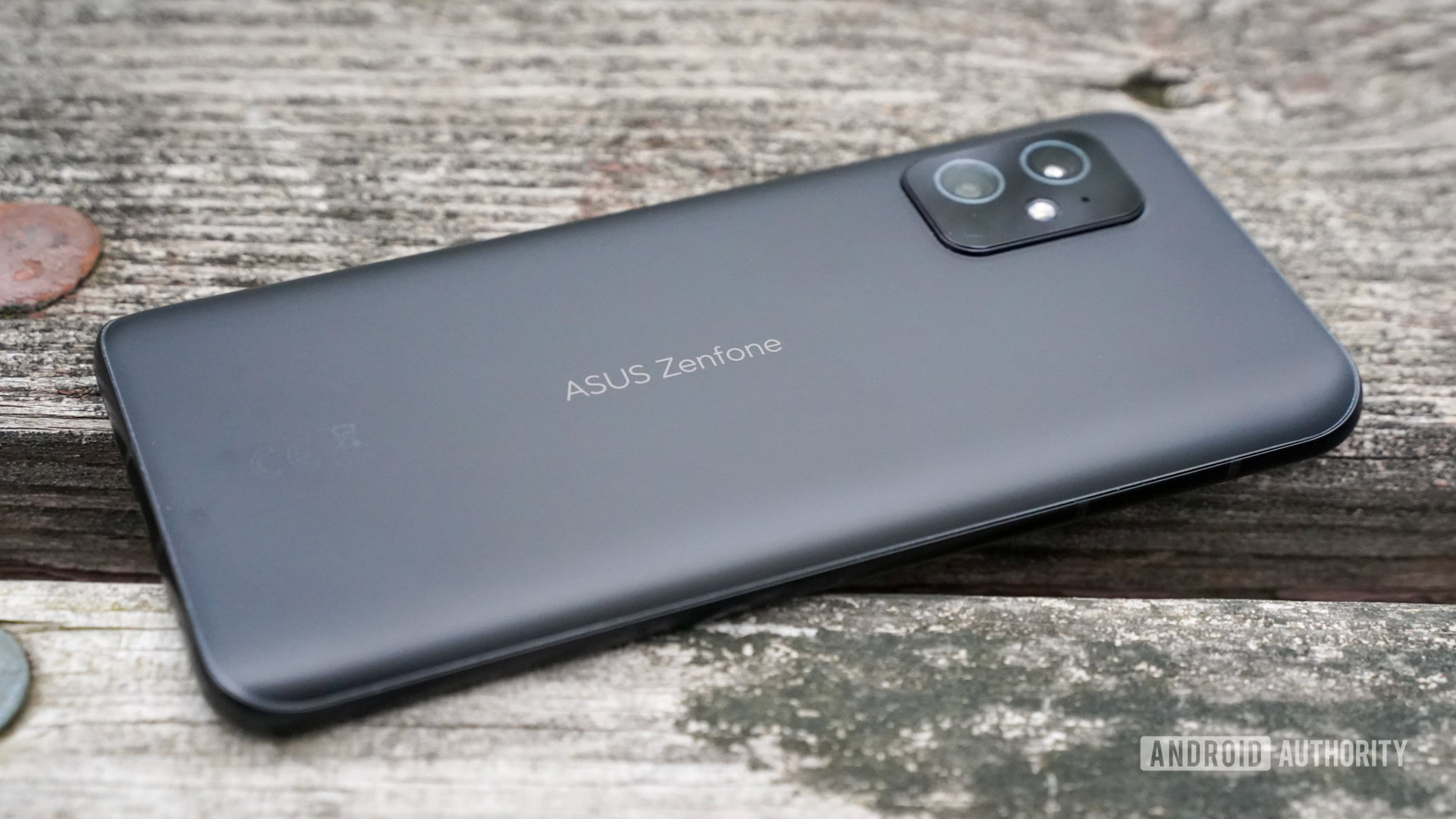
ASUS Zenfone 8 review: Pint-sized powerhouse falls just short of perfection
Published onAugust 1, 2022
Asus Zenfone 8
MSRP:
What we like
What we don't like
Our scores
Asus Zenfone 8
ASUS is going all-in on the concept of the compact flagship. Introducing the Zenfone 8 — a tiny handset with all the power of a premiere phone. ASUS sacrificed almost nothing in its pursuit of delivering a pint-sized powerhouse. It packed this phone with all the tech it could fit. Can this diminutive device fill your big smartphone needs? Find out in the Android Authority ASUS Zenfone 8 review.
Update, June 2021: The phone is now available in the United States. We’ve updated the text throughout to reflect US pricing for some models and refocused the value section around US competitors.
What you need to know about the ASUS Zenfone 8
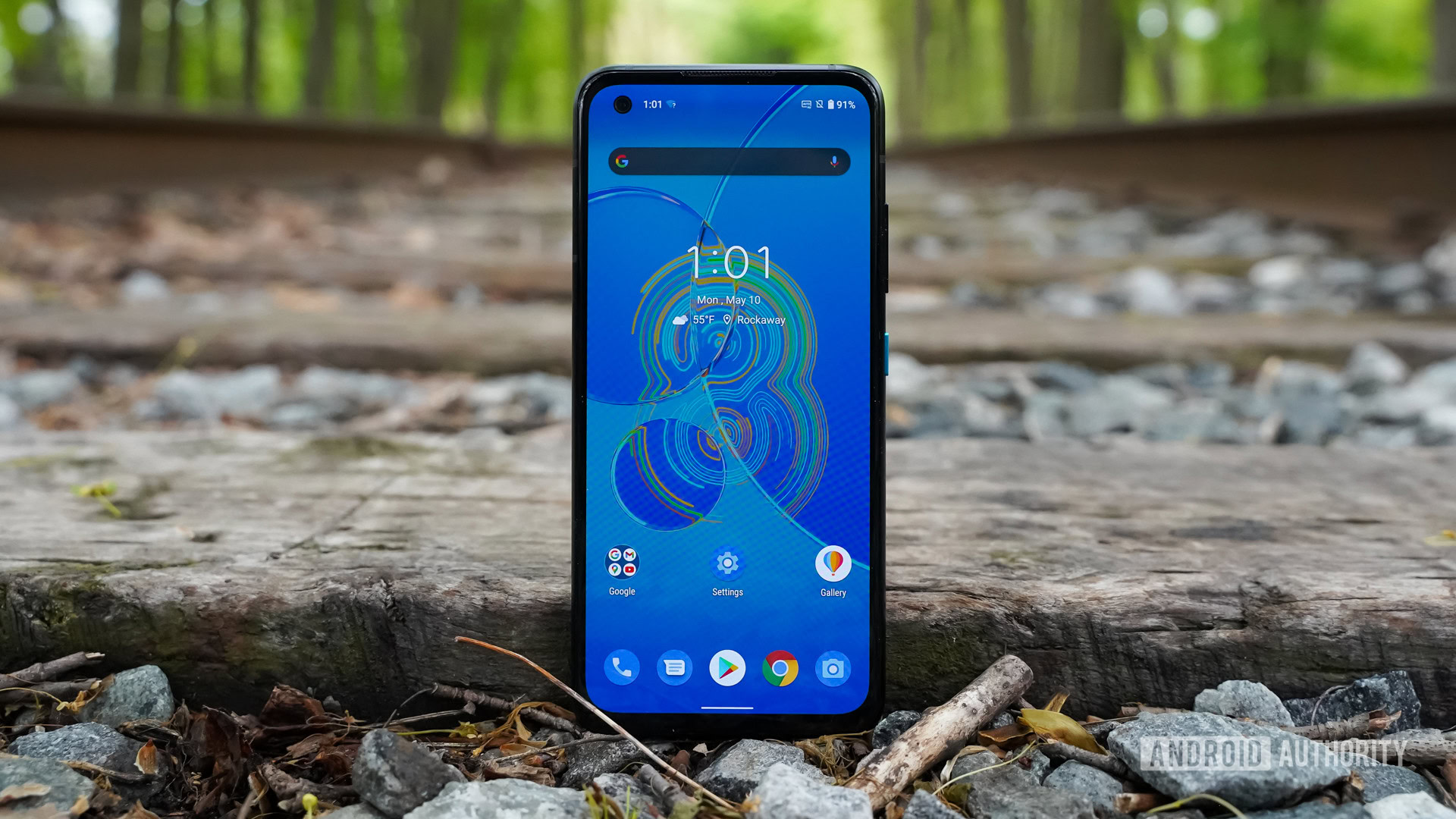
- ASUS Zenfone 8 (6GB/128GB): €599
- ASUS Zenfone 8 (8GB/128GB): $629/€669
- ASUS Zenfone 8 (8GB/256GB): $699/€729
- ASUS Zenfone 8 (16GB/256GB): €799
The ASUS Zenfone 8 series comes in two flavors: the standard model (this one) and the Zenfone 8 Flip. Don’t make the mistake of thinking the bigger ASUS Zenfone 8 Flip is the better of the two. It’s not. ASUS reserved the best tech for the smaller of the two phones in a bid to appeal to users who want as much phone as they can get in a tiny form factor.
In Europe, the Zenfone 8 comes in four variants, starting at €599 for the 6GB RAM version and going all the way up to €799 for a model with a whopping 16GB RAM (tested here). ASUS said the entry-level model won’t be available right away, so the 8GB/128GB model will be offered at the lower €599 price point at launch. More than a month after launch, it is still unclear when the 6GB/128GB model will be made available.
Related: What is considered a small Android phone in 2021 and what are your options?
The phone launched in the US on June 29 carrying a price of $629 for the 8GB/128GB model and $699 for the 8GB/256GB model. It is available from ASUS’ online shop. The Zenfone 8 comes in Obsidian Black and Horizon Silver.
ASUS has its sights set on several competitors in the space. Other phones in the same small flagship category include the Google Pixel 5, the Samsung Galaxy S21, the Apple iPhone 12 and iPhone 12 Pro (the iPhone 12 Mini is even smaller!), and the Sony Xperia 5 III. Does the ASUS Zenfone 8 have what it takes to stand up to these and other class leaders?
Why is it so small?
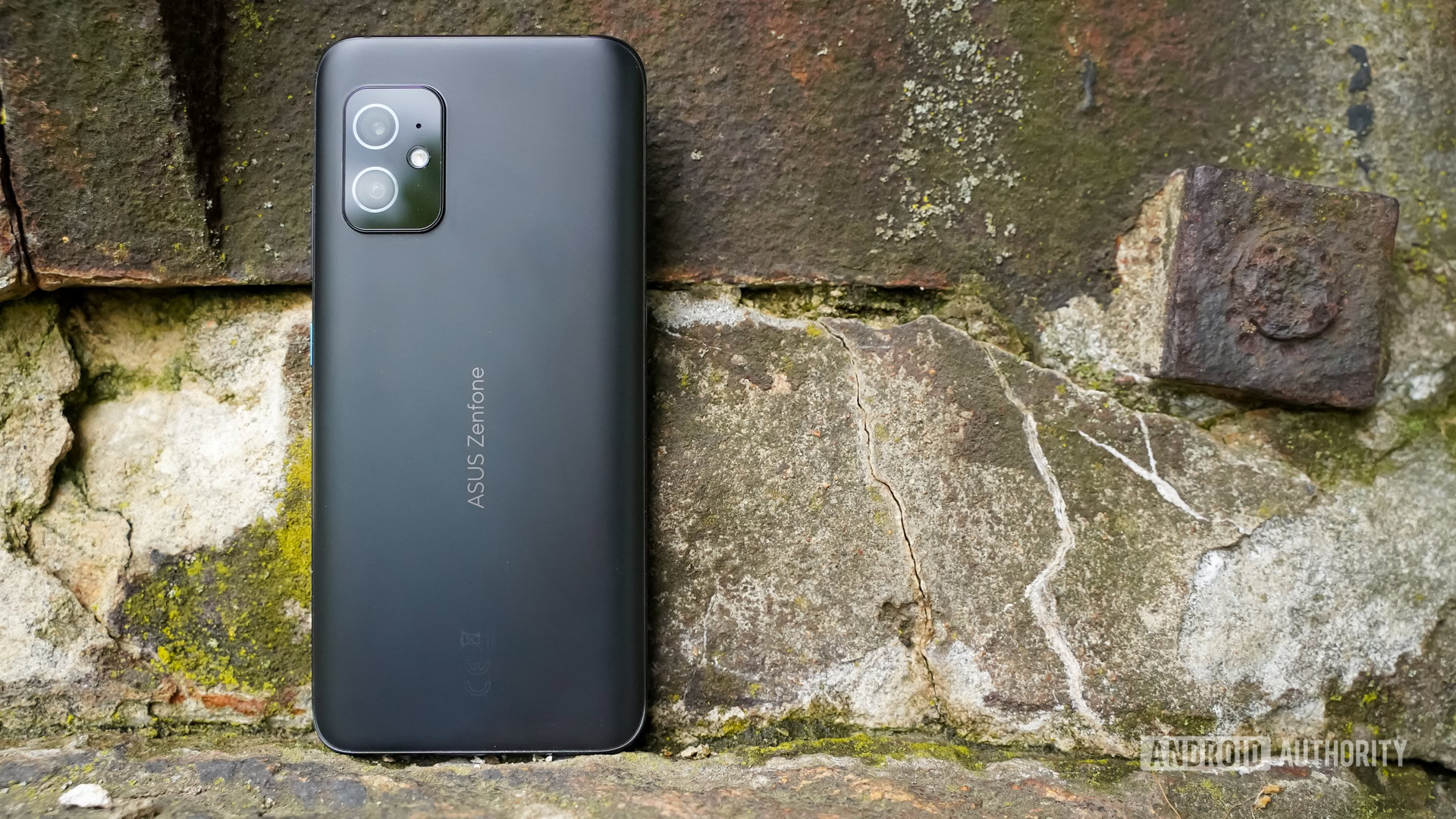
ASUS claims that two-thirds of people prefer phones with screens smaller than six inches. With so many buyers in that market, ASUS chose to focus on them with its 2021 flagship. Moreover, ASUS’ usability studies reportedly showed that phones need to be shorter than 150mm and narrower than 70mm to truly be useable in terms of thumb reach across the screen. With this data in mind, ASUS set firm goals in determining the size of the Zenfone 8, which has a 5.9-inch screen, stands 148mm tall, and sits 69mm wide.
The Zenfone 8 may be a bit simple in terms of looks, but it's also elegant, refined, and highly useable.
Some might call the design rather bland or boring. The ASUS Zenfone 8 is the simplest of glass and metal slabs. It features an aluminum mid-frame with Gorilla Glass Victus protecting the screen from breakage and Gorilla Glass 3 (which is years old at this point) protecting the rear from scratches. The phone has a basic shape with flat front glass and curved rear glass. The corners are nicely rounded nicely, and the overall form factor is smooth and pocketable.
ASUS didn’t skimp on materials or build quality. Everything about the phone is high-quality. The glass and metal components are fitted together precisely. It feels solid when gripped, which is easy to do thanks to the smaller size. We were also happy to learn the phone has an IP68 certification for protection against dust and water.
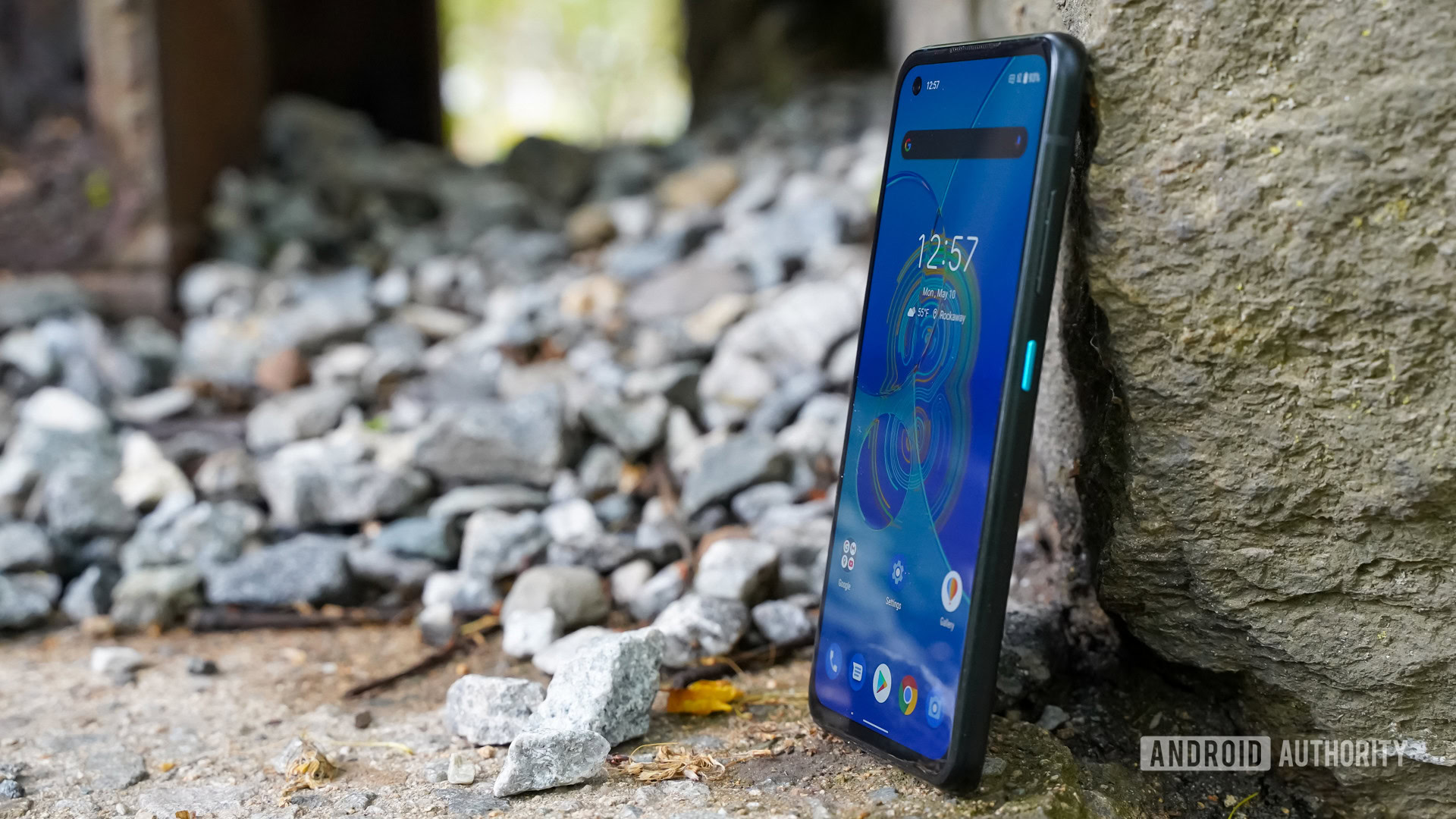
The mid-frame is busy with the phone’s functional elements. The blue-colored power button is perfectly placed along the right edge, with the volume toggle above it. These buttons have excellent travel and feedback. A 3.5mm headphone jack sits on the top edge of the phone, while the USB-C port is centered along the bottom edge.
On the back you’ll spot the two-camera array in a raised module. In keeping with the phone’s small design, the camera module is kept to a respectably compact size. It doesn’t dominate the rear like the camera module on Samsung’s phones, for example.
Much like other smaller flagships, the ASUS Zenfone 8 is a truly manageable piece of hardware that’s hard not to like. It may be a bit simple in terms of looks, but it’s also elegant, refined, and highly useable. And if you’re in that group of people who prefer smaller phones, you’ll find all the basic design elements that a flagship should offer. It’s far easier to manage than a bulky iPhone Pro Max or Galaxy S21 Plus.
How’s that tiny screen?
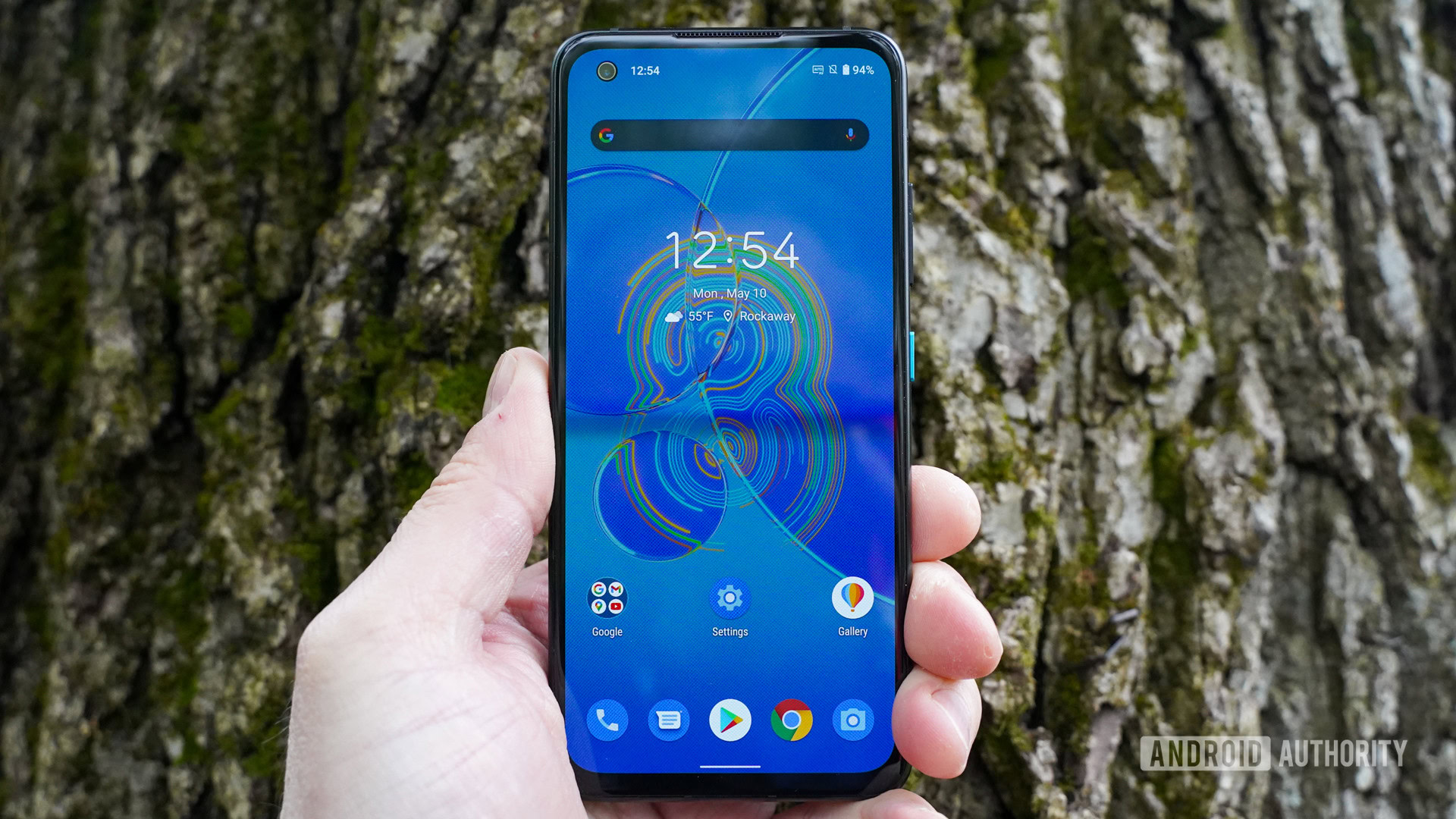
It’s hard to believe I am referring to a 5.9-inch screen as “small” but here we are. Many of today’s phones — particularly flagships — come with screens that measure between 6.1 and 6.9-inches. Some might even suggest that a 6.1-inch screen is small these days, but there’s a world of people out there for whom smaller is smarter.
The Zenfone 8’s screen measures 5.9 inches across the diagonal and offers Full HD+ resolution in a 20:9 aspect ratio. This Samsung-sourced AMOLED features a 120Hz refresh rate. Out of the box, it is set to adaptive, meaning the refresh rates ramps up and down depending on the tasks at hand. It can be set to a static 60Hz, 90Hz, or 120Hz if you prefer. The screen also supports a 1ms response time thanks to the 240MHz touch sampling rate.
More reading: Refresh rate explained: What does 60Hz, 90Hz, 120Hz mean?
Let’s not forgot brightness and color. The screen has an outdoor brightness of 800nits, with peak brightness reaching 1,100nits. There’s DCI-P3 and HDR10+ support on board as well, meaning you’ve got deep, rich color and contrast.
How does it look? Fantastic. I was very pleased with the overall performance of the display, which pushed bright, cheery colors under all lighting circumstances. Some may balk that it doesn’t have more pixels on board, but the 445ppi is plenty for this size. Everything on the screen looked clean and sharp.
ASUS kept the bezels in check, though they could be slimmer in my opinion. There’s a barely-there forehead and chin above and below the screen, respectively, which is where I was hoping you’d find items such as the selfie camera. Instead, the selfie camera is located in a punch-hole set into the upper-left corner of the screen. It’s not terribly noticeable apart from the thin silver ring that circles it and catches the light at certain angles. Some may find this annoying.
Everything on the Zenfone 8 screen looks clean and sharp.
You’ve got tons of control over how the screen behaves. There’s blue light, color profiles, smart screen, sizing, animation speeds, and app scaling. You can even change the appearance of the power button menu and the arrangement of the status bar icons. There’s an always-on display option, too, that reveals a clock when the screen is off.
The fingerprint reader is built into the display. I thought the reader was positioned in a good spot. Training the reader was a bit of a headache, as the screen kept registering dirt and asking for it to be cleaned to proceed. Once trained the reader worked just okay; it wasn’t quite as fast as others I’ve tested recently. You may find it more reliable to use a PIN, pattern, or password.
Overall, ASUS ensured its diminutive flagship phone has a flagship-class display.
What about performance?
ASUS gave the Zenfone 8 the best possible processor in order to deliver the best possible performance. The Qualcomm Snapdragon 888 — paired with 16GB of RAM in our review unit — is as quick as they come in the world of Android. The Zenfone 8 impressed with its speed and smooth operation.
The phone sailed through a handful of standard benchmarking apps, including 3DMark, AnTuTu, and GeekBench 4. It put up respectable CPU and GPU scores that matched those of competing Snapdragon 888-equipped phones. About the only phone that blew past it was the Apple iPhone 12 Pro Max, which runs Apple’s A14 Bionic silicon. I ran our homegrown Speed Test G benchmark and the phone scored a solid one minute and 15 seconds — right where it should be for a Snapdragon 888 phone. Its results were in line with those of the Samsung Galaxy S21, Xiaomi Mi 11 Ultra, OnePlus 9 Pro, and other top performers.
The Zenfone 8 impressed with its speed and smooth operation.
The phone has several performance modes and the high-performance mode kicked on when I ran 3DMark. This happened automatically. High-performance mode is the “best choice for demanding apps” according to the description in the settings. It’s basically a gaming mode for the phone which runs the processor at higher speeds at the expense of battery life. You can manually set the performance mode to something with less horsepower and more longevity if you wish.
In terms of everyday performance, the phone runs perfectly well. Nothing slows it down or causes it to lag, even when it’s set to 120Hz at all times. I checked out some games as well, and they all ran fine. Even the most demanding games exhibited lag-free experiences.
The Snapdragon 888 and plentiful RAM allotment for our test unit ensured flawless performance across all usage scenarios. The 8GB/128GB model, which is the model sold in the US, will likely put up numbers and performance that are similar, making it the variant to look out for if you want to balance price and performance.
Does the battery hold up?
ASUS says it gave the phone the absolute largest battery it could taking into consideration the size of the phone and everything else it needed to pack into the chassis. I would have preferred to see a few hundred more milliamp-hours, but maybe that’s just me.
The battery gets through a full day with a little room to spare. That’s when the phone is used in the stock 120Hz adaptive mode. It sailed through battery-hungry benchmarking tests, gaming, and other heavy lifting with ease. I noticed a slight dip in total battery life when I set the phone to full-time 120Hz mode. It still got through a full day, but just barely. Using the dedicated 90Hz or 60Hz modes leaves you with more breathing room at the end of the day.
Related: The best phone charging accessories
Believe it or not, the always-on display is the biggest battery killer. I switched the AOD on and instantly noticed a significant hit to battery life. As much as I like a good AOD for checking the time and notifications at a glance, the serious power it draws on the Zenfone 8 makes it a chancy feature to enable.
The battery can run in five distinct modes, each of which redraws the balance between performance and battery life. If you find yourself running into battery life issues, you can explore these to find the right mix.
The Zenfone 8's battery gets through a full day with a little room to spare.
As for charging speeds, ASUS kept things in check. The phone supports up to 30W wired charging. However, it doesn’t support wireless charging at all. At least ASUS was kind enough to supply the 30W charger in the box. The phone reaches 60% in 25 mins, 80% in 38 minutes, and 100% in about 80 minutes. There are tools you can use to set charging limits, change the charging speed to a consistent curve, and so on all to help keep the battery at its healthiest.
Looking at the competition, nearly all the flagships in this space offer wireless charging, while some offer faster wired charging too. ASUS played it safe. Maybe too safe.
How does the camera perform?
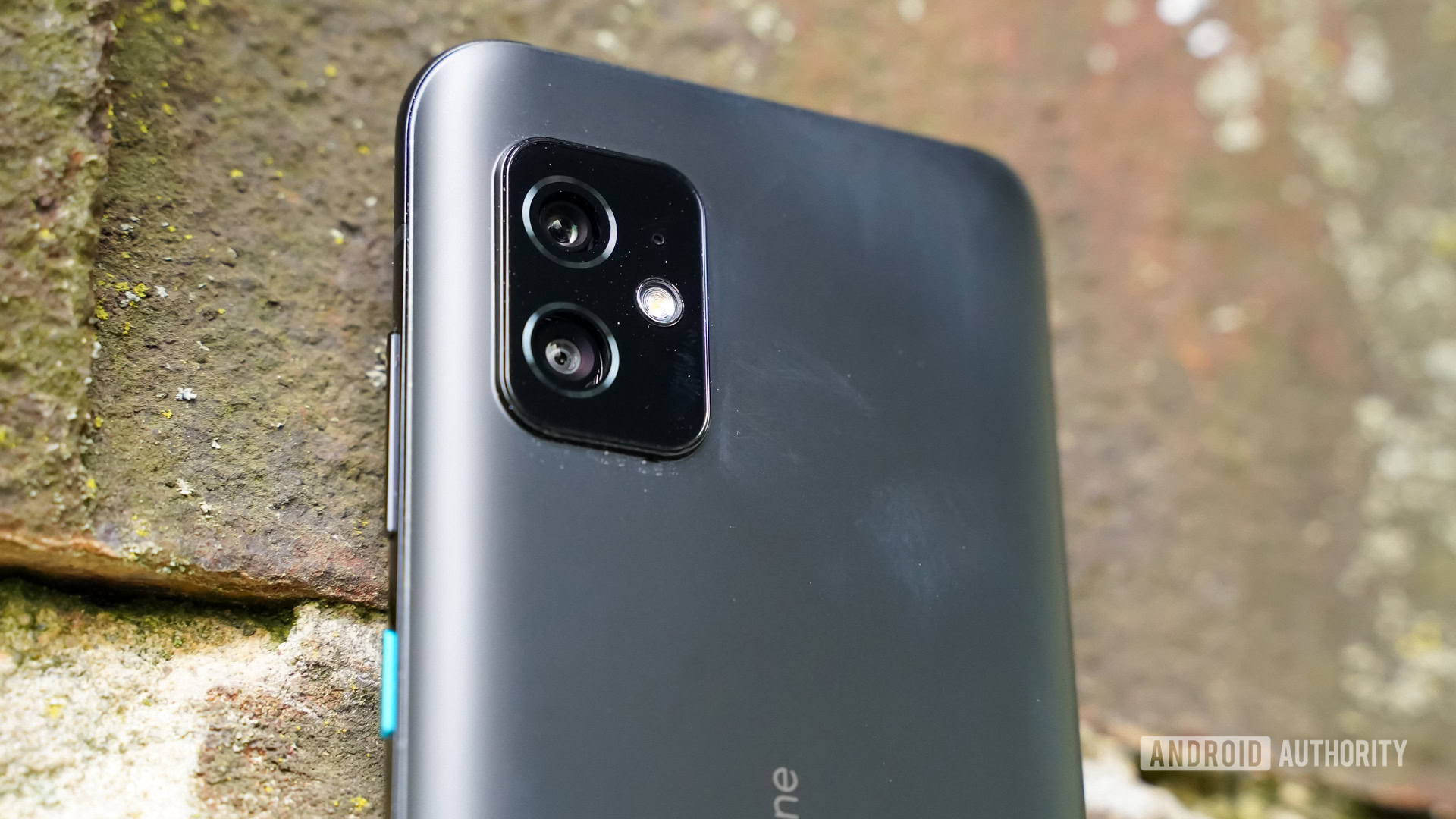
It’s hard not to be slightly disappointed with the Zenfone 8’s camera configuration. It has just two lenses — a standard lens and an ultra-wide lens — when many flagships have three lenses. The thing it really lacks is a telephoto lens, which means any zooming is performed digitally. While dropping a zoom lens for a cheaper flagship isn’t unprecedented, it’s strange to see no third camera at all. There’s no dedicated macro camera (which I’m fine with), and there’s not even a depth sensor to help produce portraits. For those that want an optical zoom lens, the fancier Zenfone 8 Flip gains the third camera but lacks optical image stabilization on the primary shooter.
See also: The best camera phones you can buy
The Zenfone 8’s main camera relies on a 64MP Sony IMX686 sensor that’s binned down by a factor of four to produce 16MP final shots. The IMX686 supports OIS, which ASUS says helps it take sharper zoom photos. This is Sony’s flagship sensor and it has appeared in many premium phones over the course of the last year. The secondary camera is a 12MP Sony IMX363. This is the same sensor found in recent Google Pixel phones, as well as affordable phones the world over. This ultra-wide camera also doubles as a macro camera. Last, there’s the 12MP selfie camera, which relies on the Sony IMX663, a newer imaging sensor.

Shots I captured with the main camera turned out good, but short of excellent.
How do the photos look? Shots I captured with the main camera turned out good, but short of excellent. I was pleased overall with exposure, color, and focus. White balance was sometimes hit or miss, though mostly accurate. ASUS isn’t doing anything such as pushing colors, so images sometimes lacked that visual punch that you might see from competitors such as the Samsung Galaxy S21.
Photos taken via the ultra-wide weren’t quite as solid. In addition to obvious visual distortion, which you might expect from an ultra-wide camera, there was a dramatic increase in the amount of noise visible in each photo. Shots taken in low light were particularly grainy, and contrast was lacking. It’s not the most impressive camera I’ve used.
Selfies captured via the 12MP front-facing camera were pleasing. The selfie camera does a respectable job with both regular selfies and bokeh’d portraits. The portraits offered good edge detection and the right balance of background blur.
The phone can capture video up to 8K at 30fps, but you’ll do best to stick with 4K at 60fps for the most usable results. Video quality was good for the most part, though I noticed a bit of grain in darker footage.
Altogether, the ASUS Zenfone 8 has a decent main camera, but it falls short of competing devices as an overall package.
Anything else?
- Zen UI 8: The phone runs Android 11 with ASUS’ Zen UI 8 on board. It has a clean look with an app drawer by default. Core Android behaviors are intact and, most importantly, Zen UI doesn’t get in the way of usability. Netflix is the only bloatware app installed, and it can be deleted if you wish.
- Software updates: ASUS doesn’t have the best track record with respect to system updates. It has committed to two major system updates for this phone, which is encouraging. However, this comes at a time when competing phone makers are beginning to offer three years’ worth of upgrades and security patches. Moreover, ASUS is slow to push the updates that it has committed to.
- 5G and no Verizon: The Zenfone 8 supports sub-6GHz 5G, so don’t expect blazing fast mmWave speeds. In addition, the phone doesn’t support Verizon in the US — only T-Mobile and AT&T for LTE and 5G.
- Notification light: The Zenfone 8 has a charging indicator light that’s tucked into the bottom edge of the phone. I really like this feature. The light shines orange as the phone charges and turns green once the battery has reached a full charge. It’s super helpful and because it’s on the bottom it’s visible whether the phone is placed on its face or back. The charging light can also double as a notification indicator.
- Speakers: The earpiece and a bottom-firing speaker work together to produce stereo sound. ASUS says the speakers are powered by dual Cirrus Logic Mono AMPs to boost volume and clarity. In practice, that means this phone gets crazy loud. I pushed it hard with some metal, dance, and techno and it rose to the challenge without getting distorted or overly noisy. The low-end was very good for a phone, and high-end sounds like cymbal crashes were crisp and clean. If you prefer to jack in, you’ve got a Qualcomm Aqstic DAC and Dirac HD Sound available via the headphone jack.
- Dual-SIM: The ASUS Zenfone 8 supports up to two SIM cards, but does not support microSD memory cards.
- Fingerprints: Both sides of the phone attract fingerprints and other grime. It takes the shine off the lovely matte finish really quickly.
ASUS Zenfone 8 specs
| ASUS Zenfone 8 | ASUS Zenfone 8 Flip | |
|---|---|---|
Display | ASUS Zenfone 8 5.9-inch AMOLED FHD+ HDR10+ 120Hz refresh rate Corning Gorilla Glass Victus | ASUS Zenfone 8 Flip 6.67-inch AMOLED FHD+ HDR10+ 90Hz refresh rate Corning Gorilla Glass 6 |
Processor | ASUS Zenfone 8 Qualcomm Snapdragon 888 | ASUS Zenfone 8 Flip Qualcomm Snapdragon 888 |
GPU | ASUS Zenfone 8 Qualcomm Adreno 660 | ASUS Zenfone 8 Flip Qualcomm Adreno 660 |
RAM | ASUS Zenfone 8 6/8/16GB LPDDR5 | ASUS Zenfone 8 Flip 8GB LPDDR5 |
Storage | ASUS Zenfone 8 128/256GB UFS 3.1 Non-expandable | ASUS Zenfone 8 Flip 128/256GB UFS 3.1 Expandable with microSD card (up to 2TB) |
Battery | ASUS Zenfone 8 4,000mAh battery 30W wired charging | ASUS Zenfone 8 Flip 5,000mAh battery 30W wired charging |
Cameras | ASUS Zenfone 8 Primary: 64MP Sony IMX686 sensor with OIS, 2x lossless zoom f/1.8 aperture 0.8μm pixels Dual LED flash 8K/30fps video Secondary: 12MP ultra-wide sensor, Dual PDAF, macro mode (IMX363, 113 degrees) Front: 12MP IMX663 f/2.45 aperture 1.22μm pixels Dual PDAF | ASUS Zenfone 8 Flip Primary: 64MP Sony IMX686 sensor f/1.8 aperture 0.8μm pixels Dual LED flash 8K/30fps video Secondary: 12MP ultra-wide sensor (IMX363, 112 degrees) Tertiary: 8MP 3x telephoto |
Connectivity | ASUS Zenfone 8 Wi-Fi 6E (US only) Bluetooth 5.2 NFC Dual nano-SIM | ASUS Zenfone 8 Flip Wi-Fi 6 Bluetooth 5.2 NFC Dual nano-SIM |
Operating System | ASUS Zenfone 8 ZenUI 8 Android 11 | ASUS Zenfone 8 Flip ZenUI 8 Android 11 |
Audio | ASUS Zenfone 8 Stereo speakers 3.5mm port | ASUS Zenfone 8 Flip Stereo speakers No 3.5mm port |
Dimensions | ASUS Zenfone 8 148 x 68.5 x 8.9mm 169g | ASUS Zenfone 8 Flip 165.04 x 77.28 x 9.6mm 230g |
Colors | ASUS Zenfone 8 Obsidian Black Horizon Silver | ASUS Zenfone 8 Flip Galactic Black Glacier Silver |
Value and competition
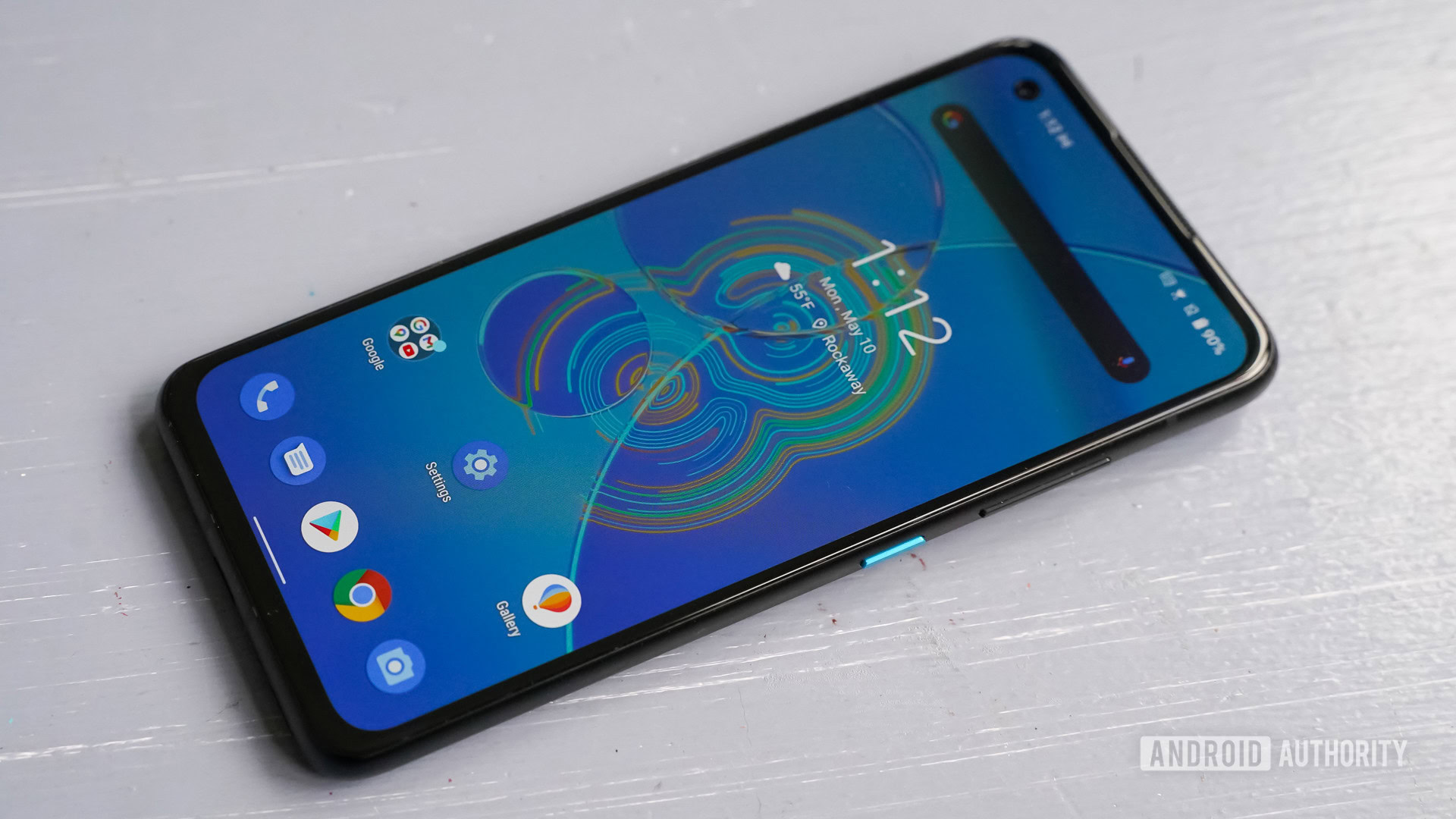
It’s hard to argue with ASUS’ pricing for the Zenfone 8 series. With a cost of just €599 for the cheapest model in Europe you’ve got quite a flagship bargain on your hands as it almost falls into mid-range territory. The phone offers a lot of value at that price point, and undercuts a lot of the competition. The same goes for the $629 model being sold in the US. It offers a lot of bang for the buck, particularly when you consider the phones it goes up against.
You’ve got a lot of top specs on board, such as the Snapdragon 888, the 120Hz screen, and the Gorilla Glass Victus face. ASUS clearly made some budget- and space-minded decisions, too, such as leaving out wireless charging and keeping the camera options in check.
Also read: The best Android phones you can buy
The first and perhaps most natural alternative to the Zenfone 8 is the Zenfone 8 Flip. The Flip is a larger variant of Zenfone 8 family, but it has some notable differences. For example, the screen is downgraded from 120Hz to 90Hz, but you’ve got a bigger battery. It also has three cameras, including a telephoto, where the Zenfone 8 has two — but the Flip loses the headphone jack, IP rating, OIS on the main shooter, and Wi-Fi 6E. The Flip is also €200 more. It’s an odd competitor and is essentially a redo of the Zenfone 7 series, but if you want a bigger Zenfone from ASUS with this year’s silicon, it’s your only choice if you’re in Europe. The Zenfone 8 Flip is not being made available in the US alongside its smaller brother.
As for other rivals, Google’s Pixel 5 starts at $699 and has a less impressive spec sheet, but a superior camera. The $799 Samsung Galaxy S21 is a better phone overall, but you’re paying for it. Perhaps the Samsung Galaxy S20 FE 5G is a more direct competitor to the Zenfone 8, as it carries a $599 price tag these days and offers many of the same features — albeit with 2020 silicon under the hood — and adds a telephoto camera.
The ASUS Zenfone 8 offers a lot of bang for the buck, particularly when you consider the phones it goes up against.
We don’t have final pricing yet on the Sony Xperia 5 III, but you can bet it’ll be higher than €599/$629. Right now it is expected to be in the neighborhood of $999. Like the Zenfone 8, the Xperia 5 III will be marketed as a small flagship. And it is. With top specs, it will be a tough competitor, but ASUS has Sony beat on price here.
There’s also the OnePlus 9 to weigh. It costs a bit more at $729 and isn’t quite the flagship the OnePlus 9 Pro is, but it is still a respectable piece of hardware.
Then there’s the Apple iPhone 12 Pro for those who aren’t afraid to jump to iOS. The 12 Pro is a bit bigger and a lot more expensive at $999. It’s perhaps a better example of what a “compact” flagship is, as it skimps on basically nothing. Further, it offers stellar software, performance, and camera experiences. If you’ve already made peace with sacrificing the telephoto lens with the Zenfone 8 then the regular iPhone 12 is also worth a look for $799. The iPhone 12 Mini ($699) offers much of the same but in an even smaller form factor than the Zenfone 8, though you’ll take an even greater hit on battery life.
ASUS Zenfone 8 review: The verdict
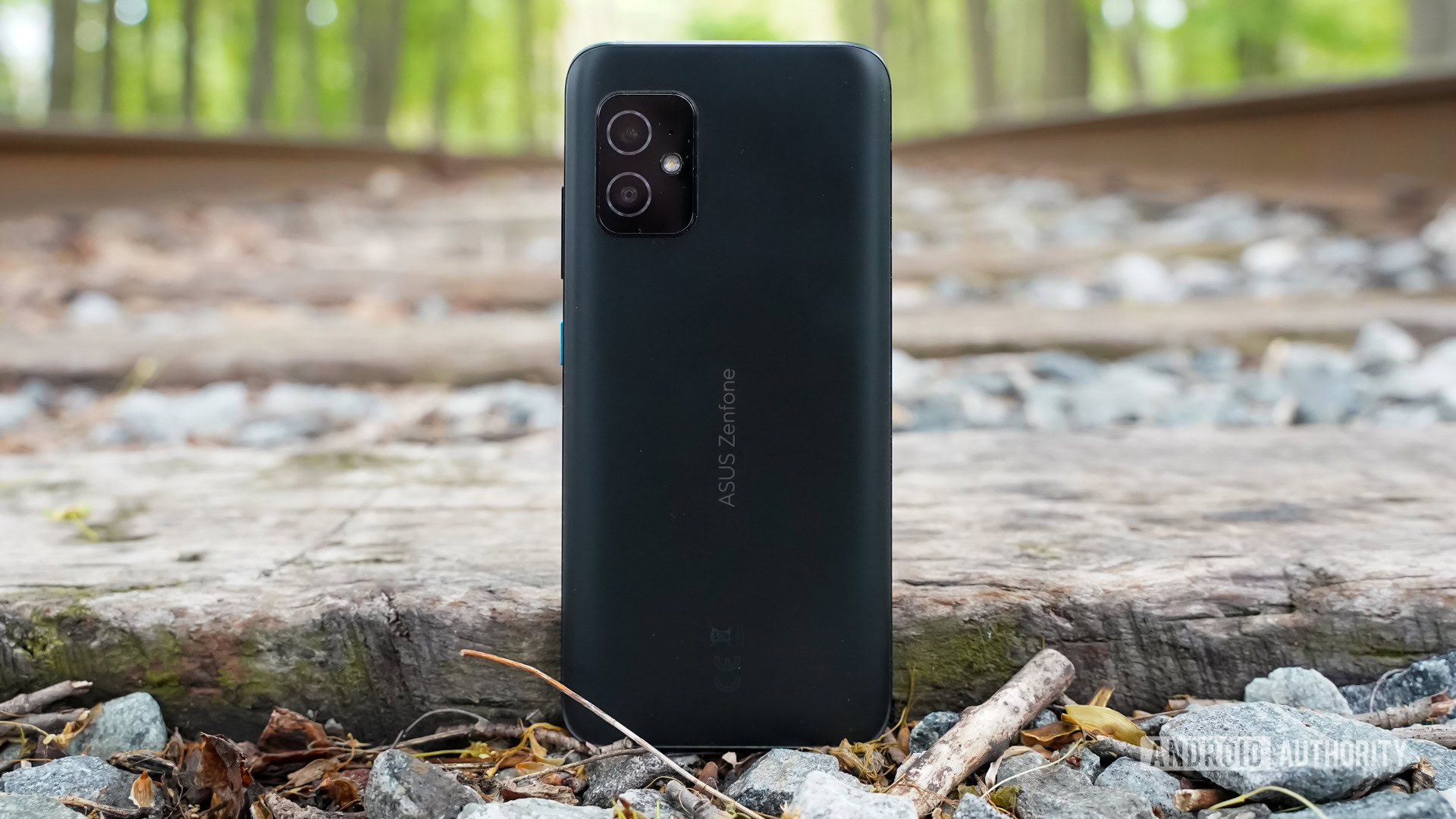
There’s always a sacrifice to be made with smaller phones. ASUS tried really hard to make the Zenfone 8 a top-performing flagship in a small, easy-to-use piece of hardware. It very nearly got everything right, yet just a few things hold the Zenfone 8 back.
The most glaring issues to me are battery life and the camera. While the battery life is generally good, flipping on features such as the always-on display takes a noticeable hit on battery life. Furthermore, while the main camera gets the job done, the ultra-wide camera falls behind the competition. The Zenfone 8 also doesn’t support the optical zoom that many of its competitors do.
There's always a sacrifice to be made with smaller phones, but the Zenfone 8 very nearly got everything right.
There’s still plenty to like. The phone’s small size makes it a comfortable piece of hardware to carry and use. The display is excellent, the performance is top-notch, and the phone offers lots of extra perks, such as a headphone jack and stereo speakers, a notification light, and the stock-like Zen UI 8.
Even with its flaws, for €599/$629, the ASUS Zenfone 8 is a heck of a bargain for small phone enthusiasts.